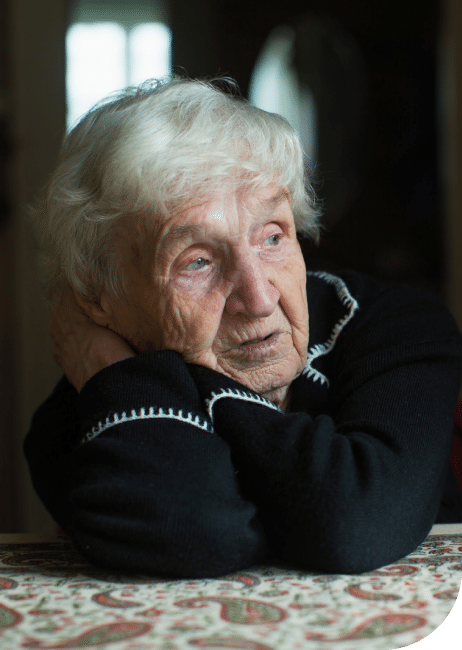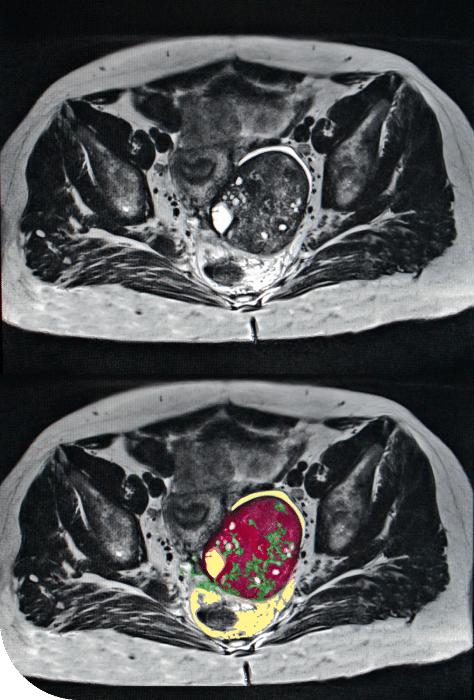Mesothelioma in Women
Mesothelioma is often regarded as a man’s disease, but women can also contract this aggressive cancer. Mesothelioma in women tends to manifest differently, with a longer period between exposure and onset of the disease and a better overall survival rate. However, women may face more hurdles than men in obtaining a diagnosis and pursuing justice against the companies that exposed them to asbestos.
Home » National Mesothelioma Law Firm » Mesothelioma Cancer » Mesothelioma in Women
How common is mesothelioma in women?
Types of Mesothelioma in Women
How do women get mesothelioma?
What is the mesothelioma latency period in women?
Mesothelioma Diagnosis in Women
Mesothelioma Prognosis in Women
Mesothelioma Treatment Options for Women
Legal Options for Women With Mesothelioma
Verdicts and Settlements for Women With Asbestos-Related Illnesses
Both men and women are susceptible to mesothelioma, but women account for just 20 percent of mesothelioma cases, according to the Women’s Health Research Institute at the University of Michigan. However, this does not mean that women exposed to asbestos are less susceptible to developing mesothelioma.
The most likely explanation for the lower occurrence in women is that occupations with the highest asbestos exposure are traditionally male-dominated. When asbestos use was at its peak, most industrial occupations were closed to women. Asbestos exposure in women most commonly occurred in the home through household goods or the husband’s work clothes.
As women gained greater access to the workplace, the likelihood of women experiencing occupational asbestos exposure increased. As a result, annual mesothelioma deaths in women increased by 25 percent, from 489 in 1999 to 614 in 2020, according to the Centers for Disease Control and Prevention (CDC).
Mesothelioma is an aggressive, deadly cancer in both men and women, associated with a dire prognosis with no known cure. However, significant differences in the latency, progression, and survival time exist between the genders. These disparities may ultimately help researchers discover more effective mesothelioma treatments.
How Common Is Mesothelioma in Women?
The CDC recorded 12,227 mesothelioma deaths in women from 1999 to 2020—reflecting a rate of 4.59 cases per million women. Though the number of deaths increased during that time, the annual age-adjusted rate of mesothelioma deaths declined from 4.83 per million to 4.15 per million.
However, mesothelioma in women occurs at a rate of more than six per million in each of the following states:
- Louisiana
- Maine
- Minnesota
- Montana
- Oregon
- Washington
- Wisconsin

Most of these states have prominent shipyard industries. Shipyard workers experienced some of the highest asbestos exposure levels. Though shipyard workers were generally men, they often brought significant quantities of asbestos fibers home on their work clothes.
Montana most likely made this list because of the Libby vermiculite mine, which was contaminated with asbestos. The contaminated vermiculite was extensively used in homes and businesses throughout the town, directly exposing many women and children to asbestos.
Types of Mesothelioma in Women
The types of mesothelioma that may impact women include:
- Pleural mesothelioma
- Peritoneal mesothelioma
- Pericardial mesothelioma
- Ovarian mesothelioma

Pleural Mesothelioma Occurrence in Women
Pleural mesothelioma accounts for approximately 78 percent of mesothelioma cases in women, according to a study published in the American Journal of Surgical Pathology. Pleural mesothelioma is cancer of the membrane surrounding the lungs. This is the most common form of mesothelioma, impacting more than 80 percent of mesothelioma patients overall.
Incidence of Peritoneal Mesothelioma in Women
Peritoneal mesothelioma accounts for approximately 10 to 15 percent of mesothelioma cases overall. However, it is markedly more common in women than in men.
A study published in the Annals of Translational Medicine analyzed the cases of 2,500 men and 700 women with mesothelioma. Peritoneal mesothelioma was diagnosed in 18 percent of women, compared to just 7 percent of men.
The Rarest Forms of Mesothelioma in Women
Pericardial mesothelioma is cancer of the lining surrounding the heart. It is exceedingly rare in both genders, accounting for less than one percent of all cases.
Ovarian mesothelioma has only been diagnosed in approximately 0.03 percent of mesothelioma cases, according to a study in the United Kingdom published in the International Journal of Surgical Pathology. This condition may be misdiagnosed as ovarian cancer.
How Do Women Get Mesothelioma?
Women generally develop mesothelioma from asbestos exposure—the primary cause of mesothelioma. Identifying the source of exposure can be more challenging for women than men, because the sources of exposure are less likely to be occupational.
Homemakers
Approximately 22.8 percent of women who die from mesothelioma were exposed to asbestos as homemakers, accounting for the largest percentage of mesothelioma deaths among women. These women could be exposed to asbestos due to their husbands’ work-related exposures, through the building materials in the home, or even through contaminated household goods.
Secondary Asbestos Exposure
The most common source of exposure in the home is secondary asbestos exposure. This occurs when someone else carries asbestos fibers into the home from another source. Typically, husbands carried asbestos fibers home on their work clothes from a workplace.
According to the CDC, women with family members exposed to asbestos in the workplace have a tenfold increased risk of developing mesothelioma. A wife could be exposed to mesothelioma while laundering her husband’s contaminated work clothes. The asbestos fibers can also enter the air in the home, and can then be inhaled by others who live there.
Asbestos in Building Components
Asbestos was a popular building material used in nearly every aspect of home construction, from the foundation to the roof, from the early 1900s until the late 1970s. Some products were used until as late as 1990.
Asbestos building materials in good condition generally do not expose occupants to asbestos. However, as these products wear over time or become damaged, asbestos can be released into the environment throughout the home. The most common building materials that may have exposed homemakers to asbestos include:
- Popcorn ceilings
- Drywall
- Insulation
- Plaster
- Cement pipes
- Asbestos pipe insulation
- Floor tiles
- Fire brick
Household Goods With Asbestos
Homemakers may have been exposed to asbestos in products they used every day. Manufacturers used asbestos in consumer goods due to its insulating, soundproofing, and fire-resistant properties. Consumer goods most likely to impact homemakers included:
- Hair dryers
- Curling irons
- Oven mitts
- Clothes irons
- Ironing board liners
- Curtains
- Holiday decor with fake snow
Asbestos in Talc
Talc is a soft silicate mineral mined from the earth near asbestos, often contaminating the final product with asbestos. Talc is commonly used in cosmetic products like eye shadow, blush, and foundation powders. The most popular cosmetic talc-based product is baby powder.
Asbestos-contaminated talc was the subject of a $4.69 billion verdict our law firm won against Johnson & Johnson in the first trial linking asbestos-laden baby powder to ovarian cancer. These women had used Johnson & Johnson baby powder for feminine hygiene, a use the manufacturer condoned and promoted.
Baby powder can travel to the ovaries and peritoneum when applied to the genital region, according to the Journal of Cancers. The opening of the fallopian tubes is located in the peritoneum near the ovaries, making it easy for asbestos-tainted talc particles to enter this area.
As a result, using talc for feminine hygiene increases the risk of:
- Ovarian cancer
- Peritoneal mesothelioma
- Ovarian mesothelioma
Baby powder used for other purposes, such as powdering the upper body or a baby, also increases the mesothelioma risk. It can easily be inhaled and penetrate the lungs, increasing the risk of developing pleural mesothelioma. Inhaled asbestos can travel from the lungs to the peritoneum, ovaries, and pericardium.
Ovarian Cancer vs. Mesothelioma
Ovarian cancer and mesothelioma have similar microscopic structures and appearances, making these two cancers difficult to differentiate. As a result, peritoneal mesothelioma or ovarian mesothelioma may be misdiagnosed as ovarian cancer. Treatment for these conditions varies, and a correct diagnosis is crucial in obtaining the best possible outcome.
A study published in the Journal of Women’s Health found that states with higher incidences of mesothelioma had a 10 percent higher incidence of ovarian cancer, suggesting a common source. In addition, women exposed to asbestos have a markedly higher risk of developing ovarian cancer.
According to two separate analyses of multiple studies each, women exposed to asbestos occupationally and in the general environment had a 75 to 77 percent increase in ovarian cancer risk compared to women without asbestos exposure.
Environmental Asbestos Exposure
Environmental asbestos exposure occurs when airborne asbestos fibers are present in the environment. Exposure can occur in residences, buildings, and natural settings. Women and men face similar risks of environmental asbestos exposure.
While occupational asbestos exposure is responsible for the majority of mesothelioma cases in men, women with mesothelioma are more likely to have been exposed to asbestos through environmental factors. This does not mean that women have a greater risk of environmental exposure, but simply reflects the fact that women are much less likely to experience work-related asbestos exposure.
Secondary asbestos exposure and exposure to asbestos in worn or damaged building materials are examples of indoor environmental asbestos exposure. Women can also be exposed to asbestos from outdoor sources such as:
- Naturally occurring asbestos deposits
- Asbestos mines
- Dust from factories that processed asbestos
- Dust from the World Trade Center after the 9/11 terrorist attack
The Libby Vermiculite Mine
Libby, Montana, was home to the world’s largest vermiculite mine of the time. Though vermiculite itself is considered nonhazardous, it may be contaminated with asbestos, as was the case in Libby. This created an environmental hazard, resulting in thousands of the small town’s residents contracting mesothelioma and other asbestos-related illnesses.
Libby vermiculite was used in schoolyards, driveways, and the ice skating rink. Children played in piles of it. The type of asbestos that contaminated Libby vermiculite was from the amphibole family, which is considered more dangerous than the more common type, chrysotile.
A 2011 study by the Journal of Exposure Science and Environmental Epidemiology found significantly elevated levels of mesothelioma, asbestosis, and asbestos-related respiratory conditions among women in Libby.
The Environmental Protection Agency initiated cleanup efforts in 1999 and designated Libby as a Superfund site in 2002. In 2009, the Environmental Protection Agency declared a public health emergency in Libby, the first time in history the agency has made such a declaration.
Natural Asbestos Deposits
Asbestos is a naturally occurring substance that can be found throughout the earth’s crust. Some areas throughout the United States have open deposits of asbestos that can become airborne. Living in these areas increases the risk of mesothelioma in women as well as men.
States with large asbestos deposits include:
Occupational Asbestos Exposure
Approximately 23 percent of mesothelioma in women is attributed to occupational asbestos exposure. By contrast, occupational asbestos exposure is responsible for approximately 85 percent of mesothelioma in men.
The occupations with the highest number of women who ultimately died of mesothelioma from 1999 to 2020 include:
- Homemakers
- Social assistance workers
- Health-care workers
- Education service providers
- Factory workers
Factory Workers
Approximately 8.8 percent of women the CDC identified with mesothelioma were factory workers. While most factory jobs were only open to men when asbestos was most heavily used, many women worked in factories during World War II to compensate for the worker shortage after the men went to war, according to History.
Though women were generally forced to leave factory work and resume their roles as homemakers after the war ended, their presence in factories increased during the decades that followed. Asbestos exposure in factories may occur through:
- Asbestos machinery
- Manufacture of asbestos-containing materials
- Boilers
- Spray-on insulation
- Asbestos building materials
Textile Factories
Few industries in the manufacturing sector hired more women than the textile industry. According to the United States Department of Labor, women accounted for half to two-thirds of all textile workers in the 1950s.
In 1996, they comprised about half of all textile workers and nearly two-thirds of apparel workers, compared to about one-third in all manufacturing sectors, according to the Bureau of Labor Statistics. Textile and apparel mill workers produced the following products:
- Yarn
- Fabrics
- Carpets and rugs
- Clothing
- Prefabricated products
Asbestos was heavily used in these products until the late 1970s because it strengthened fabrics and added fire resistance. Raw asbestos was converted to yarn, and workers separated asbestos fibers and weaved them into various materials. Apparel workers then cut into these materials during production, disturbing the asbestos again.
The majority of the textile industry was located in Georgia, North Carolina, and South Carolina. A study published in the Journal of Occupational and Environmental Medicine found higher-than-expected lung cancer rates among asbestos textile workers in the Carolinas.
Education Workers
According to the CDC, elementary and middle school workers, including teachers and teaching assistants, accounted for 11.3 percent of mesothelioma deaths in women in 2020. Asbestos was widely used in the construction of school buildings in ceiling tiles, floor tiles, and walls. As these components become damaged or worn, asbestos fibers become airborne.
Education is one of the few sectors that was traditionally open to women. During most of the 1900s, teaching was regarded as a feminine profession. According to The Atlantic, women constituted 67 percent of teachers during the 1980–1981 school year, which grew to 76 percent during the 2015–16 school year.
Asbestos in schools is an ongoing hazard for teachers, with older school buildings still in use throughout the United States. These buildings are often in poor repair, increasing the risk of asbestos fibers infiltrating the breathing space of teachers, students, and other building occupants.
As a result, teachers are twice as likely as the general public to develop mesothelioma, and most teachers are women.
Health-Care Workers
Nursing was another profession open to women during the early to late 1900s, when asbestos use peaked. According to the CDC, 15.7 of the women who died of mesothelioma in 2020 were health care workers. Most of these worked in the following capacities:
- Registered nurse
- Nursing aide
- Psychiatric nurse aide
- Home health aide
- Personal care aides
Women in these professions may have been exposed to asbestos through building materials and boilers found in older hospital buildings, and through various building components of patients’ homes.
First Responders
First responders are emergency workers such as police officers, firefighters, and paramedics. Though these occupations were traditionally open only to men, women are increasingly entering these professions.
- According to the National Fire Protection Association, 9 percent of United States firefighters are women.
- As of 2017, 35 percent of new emergency medical technicians (EMTs) are women, according to Prehospital Emergency Care.
- As of 2017, women make up 20 to 23 percent of new paramedics.
- Approximately 12 percent of police officers are women, according to National Public Radio.
First responders’ asbestos exposure may occur when working in burning buildings, during search-and-rescue operations, and while handling emergencies in damaged older buildings. Firefighters have twice the risk as the general public of developing mesothelioma.
Military Veterans
Asbestos exposure in the military has historically been high, especially for men and women serving in the Navy and Coast Guard, because of the extensive use of asbestos on ships. Asbestos on ships resulted in asbestos exposure of personnel working and serving aboard ships and in shipyards.
However, military members in every branch faced high levels of asbestos exposure from:
- Explosions, fires, and demolition of old buildings and structures overseas
- Maintenance of friction parts on motor vehicle and aircraft engines
- Fire protection clothing and gear
- Insulation materials in living quarters
Women have served in the military since the founding of the country, according to the United Services Organization. Before women were allowed in combat, they served in support roles, such as cooking, mending clothing, performing clerical tasks, and nursing. Many of these women traveled to war-torn countries aboard asbestos-laden Navy ships.
More than 57,000 nurses served in the Army Nurse Corps and 11,000 in the Navy Nurse Corps during World War II. During the Korean War, military nurses served in Mobile Army Surgical Hospitals (MASH), and 120,000 women served in active-duty noncombat positions, such as military police officers and engineers.
Nearly 11,000 women served in Vietnam, 90 percent of whom were volunteer nurses in the Army, Navy, or Air Force. Women often served as air traffic controllers, intelligence officers, and clerical support.
Today, women serve in all military positions, including combat positions in the Marines and command posts. During Operations Desert Shield and Desert Storm, around 41,000 women were deployed, comprising 7 percent of all combat troops, according to the Government Accountability Office.
Women deployed in the Gulf Wars worked in the same conditions as men. Consequently, they experienced the same asbestos exposure, resulting in an equal risk of developing mesothelioma and other asbestos-related illnesses.
Military veterans have a higher risk of developing mesothelioma than the general population. They account for approximately 30 percent of all mesothelioma cases, even though they represent just seven percent of the population.
What Is the Mesothelioma Latency Period in Women?
Mesothelioma can take 10 to 60 years to develop after the initial exposure and, in some cases, even longer. This delayed onset of the disease is known as latency. Mesothelioma latency varies widely in the studies, but nearly all agree that the latency in women tends to be longer than in men.
An Italian study published in the Journal of Occupational and Environmental Medicine found that the average latency of pleural mesothelioma in women was 50.5 years compared to 47.9 years in men. This study did not find a significant difference in peritoneal mesothelioma latency, which was 45.7 years in men and 46 years in women.
The British Journal of Cancer published a study by G. Frost that found a 29 percent longer latency of pleural mesothelioma in women compared to men, with a 22.2-year pleural mesothelioma latency in men and 28.2 years in women. This study also did not find a statistically significant difference in peritoneal mesothelioma latency between the genders. The median latency was 8.2 years.

Why Do Women Have Longer Pleural Mesothelioma Latency?
The reasons for the longer mesothelioma latency in women are unclear. According to the Journal of Lung Health and Diseases, women with household asbestos exposure have an average latency of 50 years compared to 46 years in men with occupational asbestos exposure.
Household asbestos exposure generally involves lower concentrations of asbestos than occupational exposure, resulting in a lower accumulation of fibers in the body. Since household exposure is more common in women, a lower fiber burden may correlate to a longer latency. This may be supported by the fact that children with household asbestos exposure generally have longer latency periods than homemakers do. Homemakers tend to experience higher exposure levels than children do, because they launder contaminated clothing and handle more asbestos-laden household products.
However, the women in the British study by G. Frost had been exposed to asbestos occupationally. Although it is possible that the women in this study worked in trades with lower asbestos levels, the study found insufficient evidence to support the idea that this explanation alone can explain the difference in latency.
Additionally, if higher asbestos exposure alone could explain the shorter latency in women, then men who have higher asbestos exposure levels (such as male insulation workers) would have shorter latency than other male workers, and this is not the case.
Thus, researchers are still examining the reasons behind longer mesothelioma latency in women.
Mesothelioma Diagnosis in Women
Mesothelioma is generally difficult to diagnose because it is a rare condition with nonspecific symptoms that mimic more common and often less serious conditions. As a result, it is often diagnosed at a late stage, after it has spread throughout the body, leaving limited treatment options and a poorer prognosis.
Women tend to have more delays in receiving a mesothelioma diagnosis than men. According to BMJ Open Respiratory Research, the median time from the onset of symptoms to diagnosis is 152 days in women compared to 92 days in men.
Less-Known Asbestos Exposure Sources
Most women with mesothelioma were exposed to asbestos through household products or secondary asbestos exposure, rather than occupationally. Even women with occupational asbestos exposure may have been exposed while working at jobs not traditionally associated with asbestos.
Therefore, health care providers may rule out mesothelioma without testing for it, if they consider mesothelioma at all.
Sex Discrimination in Health Care
Numerous studies have found that women face systemic discrimination in health care. An investigative report by the Washington Post revealed that health care providers routinely dismiss the pain and other symptoms reported by women. Instead of performing tests to rule out serious conditions, they may assume the pain stems from:
- Mental illness
- Anxiety
- Poor stress management
- Non-pathological reproductive pains, such as menstrual cramps
- Overreactions
- Being “dramatic”
Misdiagnosis of Pleural Mesothelioma
A study published in the Journal of the American Heart Association found that women who visit emergency departments for chest pain are less likely than men to receive:
- Emergency triage
- Electrocardiography
- Admission for observation
In some cases, women with chest pain are diagnosed with psychological problems, such as anxiety or stress, without the benefit of further testing. Chest pain is a common symptom of mesothelioma.

Lung Conditions Commonly Diagnosed
Women who present with additional symptoms, such as coughing, may be misdiagnosed with an upper respiratory infection or pneumonia. According to Oncology Central, the symptoms of mesothelioma mimic those of pneumonia. Even if a malignancy is detected, it may be misdiagnosed as lung cancer.
These misdiagnoses often occur in men too. However, mesothelioma is often regarded as a man’s disease, and assumptions about women’s asbestos exposure (or lack thereof) could further hinder an accurate mesothelioma diagnosis in women.
Breast Cancer
A delayed pleural mesothelioma diagnosis allows mesothelioma to spread throughout the body. According to the World Journal of Surgical Oncology, it is rare for non-breast tumors to spread to the breasts, but this may occur with mesothelioma, as it did in a published case study.
If mesothelioma does spread to the breast, it could easily be misdiagnosed as breast cancer rather than metastatic pleural mesothelioma. Breast cancer is the most common cancer in women, while mesothelioma is a rare disease that is not generally expected to occur in women.
As a result, the tumor on the breast would likely be the first tumor detected, leading to a misdiagnosis of breast cancer.
Peritoneal Mesothelioma Misdiagnosis
The symptoms of peritoneal mesothelioma are nonspecific and difficult to diagnose. The most common symptom is a distended abdomen, occurring in 30 to 80 percent of patients, according to the Annals of Translational Medicine. The second most common complaint is nonspecific abdominal pain, occurring in 27 to 58 percent of peritoneal mesothelioma patients.
Other symptoms of peritoneal mesothelioma include:
- Bowel obstruction
- Feeling full too quickly while eating
- Unexplained weight loss
- Nausea
- Hernia
- Fever
- Night sweats
Women presenting with abdominal pain may be dismissed or gaslighted. According to a Society for Academic Emergency Medicine study, women with severe abdominal pain wait almost 33 percent longer for pain medication than men who visit the emergency department.
Women presenting with symptoms of peritoneal mesothelioma may be falsely presumed to be suffering from the following:
- Anxiety
- Irritable bowel syndrome
- Psychosomatic pains
- Menstrual problems
Ovarian Mesothelioma and Ovarian Cancer
Ovarian mesothelioma is very rare, and it is difficult to differentiate from ovarian cancer and peritoneal mesothelioma. Ovarian mesothelioma may spread to the peritoneum before mesothelioma is diagnosed. Additionally, ovarian cancer and mesothelioma have similar properties on radiological tests, and the cells of both types look similar when viewed under a microscope.
This similarity means ovarian mesothelioma may be misdiagnosed as peritoneal mesothelioma or ovarian cancer. Misdiagnosing ovarian mesothelioma can lead to underestimation of the tumor, resulting in less effective or less targeted treatment.
The diagnosis of ovarian mesothelioma should be confirmed via immunohistochemical staining. This is the most reliable means to distinguish ovarian mesothelioma cells from ovarian cancer cells.
Lupus and Pericardial Mesothelioma
The Journal of Medical Case Reports published a case study of a woman with pericardial mesothelioma who was misdiagnosed with the autoimmune condition lupus. Pericardial mesothelioma was finally identified when doctors conducted a CT scan and biopsy after several pericardial effusion relapses.
According to the Mayo Clinic, 90 percent of lupus cases affect women, and the disease can target any organ. In this case, it was assumed that lupus was impacting the pericardium.
Pericardial mesothelioma may also present with nonspecific symptoms such as chest pain and shortness of breath, which may be misdiagnosed as anxiety or acid reflux.
Mesothelioma Prognosis in Women
The prognosis for mesothelioma is poor in both men and women, with a life expectancy of 12 to 21 months for pleural mesothelioma, depending on the stage of the disease at diagnosis. The life expectancy for peritoneal mesothelioma ranges from 8.7 to 92 months, depending on which treatment options are available.
More than 80 percent of mesothelioma patients are men, so these life expectancies skew strongly towards men’s life expectancies. Women with mesothelioma tend to have higher survival rates than men.
According to the Annals of Thoracic Surgery, the five-year survival rate of women with malignant pleural mesothelioma is nearly triple that of men, at 13.4 percent compared to 4.5 percent. The higher survival rate in women may be attributable to the following:
- Differences in sources of asbestos exposure
- Differences in tumor biology
- Impact of circulating hormones
An analysis of the National Cancer Database published in Carcinogenesis found that women with mesothelioma have significantly longer survival times than men. The study also found a positive correlation between age at diagnosis and a longer survival time.
According to a British study of 10,244 pleural mesothelioma patients published in the American Journal of Clinical Oncology, women were diagnosed with mesothelioma at markedly younger ages. 22.1 percent of female patients were younger than 65 years old at diagnosis, compared to 19.7 percent of male patients.
Despite being less likely to receive chemotherapy, the women had significantly better overall survival. 21.7 percent of female patients were still alive two years after diagnosis, compared with 16.3 percent of males.
Mesothelioma cells may be epithelial or sarcomatoid types. Epithelial mesothelioma is more responsive to treatment and is generally less aggressive than sarcomatoid mesothelioma. Patients presenting with both cell types simultaneously are diagnosed with biphasic mesothelioma.
According to the American Journal of Clinical Oncology study, approximately 35.7 percent of women had epithelial mesothelioma, compared to just 30.9 percent of men. This is associated with a better prognosis.
In addition, women with peritoneal mesothelioma are more likely to have a subtype of epithelial mesothelioma, well-differentiated papillary mesothelioma, according to Pathology Outlines. This type of mesothelioma is often benign, rarely recurs, and is rarely fatal. It is typically diagnosed incidentally during unrelated surgeries.
Well-differentiated papillary mesothelioma may occur in pleural mesothelioma also, but this occurs about as often in men as in women.
Peritoneal mesothelioma, which is more common in women than men, generally has a better prognosis than pleural mesothelioma. According to the Annals of Translational Medicine, a study of 2,500 men and 700 women found that 7 percent of male mesothelioma patients had peritoneal mesothelioma, compared to 18 percent of female mesothelioma patients.
This result is consistent with other studies, such as a Chinese study published by the American Journal of Industrial Medicine, which found an overrepresentation of peritoneal mesothelioma among women.
A 2015 study by the World Journal of Surgical Oncology concluded that higher levels of the sex hormones estrogen and progesterone in women might prolong survival. The study also found that postmenopausal women with lower levels of these hormones had similar survival to men. While the exact mechanisms are still being studied, researchers believe that estrogen and progesterone may bind to certain receptors on mesothelioma cells and inhibit their growth or cause them to die.
According to the study, the median survival time for women with peritoneal mesothelioma was greater than 60 months, compared to 43 months for men.
Mesothelioma Treatment Options for Women
Mesothelioma treatment for women is approached similarly to men. When mesothelioma is diagnosed in the early stages, before it has spread to the lymph nodes or distant areas of the body, surgery may be offered.
For pleural mesothelioma, this may entail a procedure known as pleurectomy and decortication, during which the lining around the lungs and all visible tumors are removed. In some cases, surgery may involve removing the lung and surrounding tissues in a procedure known as extrapleural pneumonectomy.
If the cancer has already spread or is otherwise inoperable, a combination of systemic and targeted therapies may be employed. The treatment plan for patients who have had surgery may also include these therapies. They include:
- Chemotherapy
- Radiation therapy
- Mesothelioma multimodal therapy
- Alternative health treatments for mesothelioma
Multimodal therapy includes any combination of the available therapies. Alternative medicine is generally used to manage symptoms and complement conventional therapy.
Legal Options for Women With Mesothelioma
Women with mesothelioma may be entitled to recover substantial compensation from the companies that exposed them to asbestos and caused the mesothelioma. Identifying the responsible companies can be especially challenging for women because their asbestos exposure often occurs outside the workplace.
Identifying Your Source of Asbestos Exposure
If you are a woman with mesothelioma unsure about how you were exposed to asbestos, our resourceful mesothelioma lawyers at the Lanier Law Firm can help you identify the asbestos companies responsible and help you get justice.
Our extensive picture library of asbestos products has helped numerous clients identify the liable companies.
Our experienced lawyers will spend as much time with you as necessary to obtain a detailed life history to ensure we identify the companies responsible for your mesothelioma.
We will collect the names of companies that employed you or any member of any household where you lived during your lifetime to identify your sources of asbestos exposure, whether occupational, household, or secondary. We will also look at the following potential sources of environmental asbestos exposure:
- Schools you attended
- Military experience, which may have resulted in occupational and environmental exposure
- Businesses you frequently visited
- Your address history to determine if you lived near asbestos mines, factories, or natural deposits
Mesothelioma Claims for Compensation
After we identify your sources of exposure, we will determine what types of mesothelioma claims you qualify to file. Though financial compensation cannot restore health after a mesothelioma diagnosis, it can give you and your family a sense of justice and financial security.
Mesothelioma Lawsuit
You may be eligible to file a mesothelioma lawsuit against the companies responsible for your asbestos exposure. Compensation from a lawsuit may include the following:
- Medical bills
- Lost wages
- Lost earning capacity
- Pain and suffering
- Punitive damages
Asbestos Trust Funds
You may be eligible to receive compensation from one or more of the 60 asbestos trust funds established by companies that went bankrupt due to their asbestos liabilities. Our attorneys can help you file your asbestos trust fund claims.

Verdicts and Settlements for Women With
Asbestos-Related Illnesses
Our law firm has recovered billions of dollars from settlements and verdicts against companies that exposed women to asbestos, including:
- $3.859 million for the family of a deceased woman exposed to asbestos through her husband’s work clothes
- $1.899 million verdict on behalf of a woman who ingested asbestos fibers through her father’s work clothes, then her husband’s
- $1.895 million settlement for a deceased woman exposed to asbestos through her husband’s work clothing
- $1.6 million settlement for the family of a deceased woman exposed to asbestos through cosmetic talc and construction products
- $1.5 million settlement for a woman with pleural mesothelioma stemming from asbestos in cosmetic products and her husband’s work clothes
- $1.483 million settlement for a woman diagnosed with peritoneal mesothelioma
- $1.15 million settlement in Florida for a woman exposed to asbestos through talcum powder
Contact The Lanier Law Firm Today
Our attorneys understand the unique challenges women face while pursuing mesothelioma compensation. We can break down those barriers and help you recover the compensation you deserve. Contact us today for a free consultation.
By submitting this form, you agree to our terms & conditions. Please read full disclaimer here.



